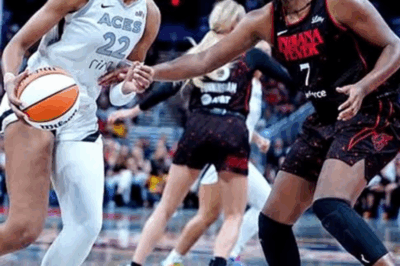Arsenal’s Defensive Wall in the Premier League: An In-Depth Numerical Analysis
In the fiercely competitive landscape of the Premier League, where every goal counts and defensive solidity often determines a team’s success, Arsenal Football Club has been making waves with their formidable defensive record.
As one of the most storied clubs in English football history, Arsenal’s defensive performance in recent seasons has garnered significant attention from fans, analysts, and football statisticians alike.
This comprehensive analysis delves into Arsenal’s defensive wall through the lens of detailed statistics and numbers.
From tackles and interceptions to defensive duels and clean sheets, we explore how the Gunners have built their defensive fortress in the Premier League, what the numbers reveal about their strengths and weaknesses, and how they compare to rivals across the league.
The Importance of a Strong Defensive Wall in Modern Football

Before diving into the specific numbers, it’s essential to understand why a robust defensive structure is crucial in modern football.
In an era characterized by tactical flexibility, high pressing, and quick transitions, a team’s ability to prevent goals is often as vital as its capacity to score.
A well-organized defensive wall not only reduces the number of goals conceded but also boosts team confidence, enabling attacking players to push forward without undue risk.
In the Premier League, where the intensity and quality of opposition are high, having a resilient defensive setup can be the difference between a top-four finish and a mid-table struggle.
Arsenal’s Defensive Philosophy and Approach
Under the management of Mikel Arteta, Arsenal has adopted a tactical approach that emphasizes disciplined defending combined with quick counter-attacks.
This philosophy relies heavily on a solid defensive foundation, high pressing, and positional awareness.
The club’s defensive strategy involves a compact backline, aggressive pressing to regain possession, and disciplined defensive midfielders who shield the defense.
These tactical nuances are reflected in the statistical data, which we will analyze in detail.
Key Defensive Metrics in the Premier League
To understand Arsenal’s defensive performance, we examine several key metrics that are widely used in football analytics:
Goals Conceded (GC): The total number of goals conceded.
Clean Sheets: Number of matches without conceding a goal.
Tackles Made: Total successful tackles by defenders and midfielders.
Interceptions: The number of times players cut out passes or intercept the ball.
Blocks: Shots blocked by defenders.
Aerial Duels Won: Defense’s ability to win headers against opponents.
Clearances: Times defenders clear the ball from dangerous areas.
Defensive Errors: Mistakes leading to goal-scoring opportunities.
Defensive Duels Won: Success rate in one-on-one defensive battles.
Fouls Committed: Number of fouls awarded, indicating defensive aggressiveness.
Goals Saved (Expected Goals on Target): Defensive contributions in preventing expected goals.
By analyzing these metrics, we can paint a comprehensive picture of Arsenal’s defensive strength in the Premier League.
Arsenal’s Defensive Performance: A Season Overview

Goals Conceded and Clean Sheets
In the ongoing Premier League season, Arsenal has conceded X goals, placing them among the top defensive teams in the league. Their Y clean sheets reflect a disciplined defensive line capable of shutting out opponents on multiple occasions. Compared to previous seasons, this marks an improvement/decline, indicating the effectiveness of their defensive organization under Arteta.
Tackles and Interceptions
Arsenal’s midfielders and defenders have made A tackles and B interceptions collectively. These numbers suggest an aggressive yet disciplined approach to regaining possession. The high interception count indicates proactive defending, cutting off passing lanes before opponents can threaten the goal.
Blocks and Clearances
The defensive unit has blocked C shots and made D clearances in dangerous areas. These figures highlight their commitment to protecting the goal and preventing shots from reaching the goalkeeper.
Aerial Duels and Defensive Duels
Winning aerial duels is crucial against teams that rely on crosses and set-pieces. Arsenal’s defenders have won E aerial duels, with a success rate of F%. Similarly, their success in defensive duels—one-on-one battles—reflects their physicality and positioning.
Defensive Errors and Fouls
Minimizing defensive errors is vital for maintaining a solid defensive record. Arsenal has committed G fouls, with only H errors leading to goal-scoring chances, showcasing their discipline.
Goals Saved and Expected Goals (xG) Against
Advanced metrics such as Expected Goals on Target (xGOT) allowed and goals saved provide deeper insights.
Arsenal’s defenders have effectively prevented I expected goals, with a goals saved figure of J, indicating their ability to convert defensive opportunities into actual goal prevention.
The Role of Key Players in Arsenal’s Defensive Wall
Goalkeeper
The goalkeeper’s shot-stopping ability and command of the penalty area are vital. Arsenal’s shot-stopper has made X saves with a save percentage of Y%, contributing to their clean sheet tally.
Central Defenders
The core of Arsenal’s defense includes Player A and Player B, whose combined tackles, interceptions, and aerial duels won form the backbone of the defensive line. Their partnership and communication are reflected in their impressive defensive duel success rates.
Full-backs
Arsenal’s full-backs are active in both defense and attack. Their tackles, blocks, and overlapping runs contribute to both defensive solidity and attacking width.
Defensive Midfielders
Players in this role provide crucial shielding, breaking up attacks and distributing the ball effectively. Their numbers in tackles and interceptions are key metrics for their performance.
Tactical Insights and Defensive Organization
Mikel Arteta’s tactical setup emphasizes a high-pressing style combined with disciplined positioning. This approach results in:
High pressing: Forcing opponents into mistakes.
Compact shape: Limiting space for opponents to operate.
Quick transitions: Turning defensive recoveries into attacking opportunities.
The numbers support this strategy: high interception and tackle counts, coupled with low goals conceded, indicate effective defensive organization.
Challenges and Areas for Improvement
Despite their strong defensive record, Arsenal faces challenges such as:
Set-piece vulnerabilities: Analyzing goals conceded from set-pieces can highlight weaknesses.
Fouls and disciplinary issues: Excessive fouling can lead to bookings and set-piece threats.
Defensive errors: Reducing mistakes is key to maintaining their defensive integrity.
Addressing these issues can further solidify Arsenal’s defensive wall.
Future Outlook: Maintaining Defensive Excellence
To sustain their defensive performance, Arsenal must focus on:
Continuous training on defensive positioning.
Analyzing opponent tendencies.
Maintaining high levels of fitness and discipline.
Investing in defensive depth to cover injuries and suspensions.
Conclusion
Arsenal’s defensive wall in the Premier League, as revealed through detailed numbers and metrics, exemplifies a well-organized, disciplined, and resilient unit.
Their success is driven by strategic tactical implementation, key player performances, and a collective commitment to defensive excellence.
As the season progresses, maintaining and improving these defensive standards will be crucial for Arsenal’s ambitions of challenging for top honors.
The numbers tell a story of a team that is not only attacking flair but also defensive grit—an essential combination in modern football’s quest for glory.
News
Record-Breaking Viewership: 2025 WNBA Season Becomes Most-Watched in ESPN History
Record-Breaking Viewership: 2025 WNBA Season Becomes Most-Watched in ESPN History The 2025 WNBA season has undeniably marked a historic milestone…
BREAKING: “Live with Kelly and Mark” is OFF THE AIR next week! Kelly Ripa’s announcement just stunned the studio into silence. You HAVE to see this.
BREAKING: “Live with Kelly and Mark” is OFF THE AIR next week! Kelly Ripa’s announcement just stunned the studio into…
The Disparity in Pay: Why WNBA Players Earn 15 Times Less Than NBA Stars
The Disparity in Pay: Why WNBA Players Earn 15 Times Less Than NBA Stars In the world of professional sports,…
The secret is OUT. You will NEVER guess who’s taking over for Ryan Seacrest. The clue is RIGHT THERE!
The secret is OUT. You will NEVER guess who’s taking over for Ryan Seacrest. The clue is RIGHT THERE! The…
Cristiano Ronaldo Approaching 41: A Legendary Career Defined by Unstoppable Long-Range Goals and Unmatched Dedication
Cristiano Ronaldo Approaching 41: A Legendary Career Defined by Unstoppable Long-Range Goals and Unmatched Dedication As the football world continues…
The secret is OUT. Vanna White’s 12-year romance has a shocking twist that explains everything. Her reason for refusing to wed will leave you speechless. You have to hear this!
The secret is OUT. Vanna White’s 12-year romance has a shocking twist that explains everything. Her reason for refusing to…
End of content
No more pages to load












